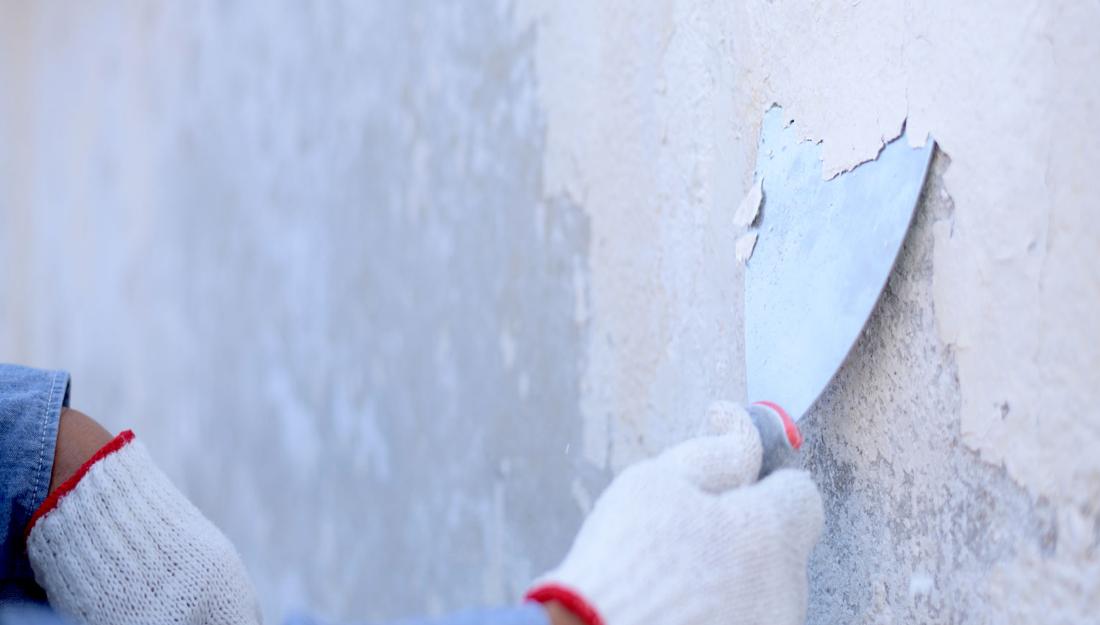Concrete is one of the most durable and versatile construction and home improvement materials, but there is one question that has to be answered after years of wear and tear: how to remove paint from concrete? Whether you accidentally splattered paint on your driveway or patio during a DIY project, or you are removing paint from a new (or old) concrete wall, floor, or other surface, the process is closer to removing paint from concrete.
Thank you for reading this post, don't forget to subscribe!This post will guide you through a number of tried-and-true ways to remove paint from concrete, the tools needed and materials that you’ll require and also the safety measures to consider. By the time we’re done, you’ll be well equipped to clean and rejuvenate your concrete no matter what kind of paint you need to remove.
Safety First: Suit Up for Paint Stripping
Before you start at stripping, it’s extremely important to establish a clean work environment before using a paint stripper or any form of tool: Most of the paint stripping techniques include chemicals, dust, or power equipment that requires high pressure, all of which can be hazardous without proper safety measures. Here’s what you need to do:
Protective Equipment
- Gloves When using solvents or paint removers, wear chemical-resistant gloves.
- Safety Glasses: Prevent chemical splash, dust and debris from entering the eye.
- Respirator Mask: Avoid breathing hazardous fumes and concrete dust.
- Long Sleeve with Pant: Protect your skin from splash of pesticides or sharp objects.
Work Area Preparation
Ventilate: If you’re indoors, be sure to ventilate, by opening doors and windows.
Protect Surfaces: Use plastic sheeting or a tarp to cover everything else around the workspace to avoid any stains or damage.
Now that you know about safety, it is time to collect the materials.
What You’ll Need Materials and Tools
Depending on how you plan to remove the paint, the tools and materials you will need will also vary. Here is what I think is essential:
Basic Materials
- Paint scraper or putty knife
- Brush with wire or wire-bristle broom
- Bucket and scrub brush
- Mop and rags
- Soap and water
Chemical Stripping
- Chemical-based paint stripper (go for biodegradable or eco-friendly where available)
- Brush or paint sprayer for application
Pressure Washing
- A pressure washer (2,500 PSI or more is suggested for heavy paint removal)
Abrasive Methods
- A sander with some concrete sanding pads, or an angle grinder and a diamond sanding disc.
- Soda or sandblaster (for severe cases)
Now that you’ve covered the fundamentals, it’s time to consider your options.
How to Get Paint Off of a Concrete Driveway
When it comes to removing paint from concrete, however, there is no one-size-fits-all solution. Which method you use will depend on the type of paint, how much of the area is covered and the state of the concrete. Here are the best approaches:
Chemical Paint Strippers
Chemical paint strippers do a great job of removing latex and oil paint from concrete. They do so by dissolving the paint’s bond with the concrete beneath, which can then be scraped away.
Best for: Stubborn, old paint that refuses to budge or covering a lot of space.
Advisories: Be sure that the product you choose is compatible with your specific type of concrete, and follow the manufacturer’s directions.
Pressure Washing
Great for exterior areas such as driveways or patios, a pressure washer has a high-pressure stream of water to blast away paint. This is eco-friendly and free of chemicals.
Best for: New paint spills or thin paint buildup.
Things to Consider when Buying the Best Pressure Washer for Concrete Do not use highest pressure on old or broken-down concrete because it may get deeper cracks.
Abrasive Techniques
If chemical strippers or power washing are not effective, mechanical means — such as a sanding machine or soda blasting — can be used to remove paint. These will work really well for hard paint or layered paint stuck to texture wall.
Best for: thick, stubborn paint or delicate surfaces.
Caveats: Very abrasive techniques can damage the concrete, so do any of these treatments with caution.

Step-by-Step Instructions
Now that you’ve selected your method, here’s a step-by-step to get the job done:
Chemical Treatment by Paint Stripper
Use Stripper Apply etching paint stripper to the painted space using a brush or sprayer.
Wait: Let the stripper seep into the paint, according to the product’s direction (typically 10–20 minutes).
Scrape: Scrape away softened paint using a paint scraper or putty knife.
Repeat as Needed: For tough spots, apply the stripper again and scrape another round.
Wash and Rinse: Wash the surface with warm soapy water to remove any remaining residue.
Pressure Washing Method
Get The Washer Ready: Use a suitable nozzle for high pressure washing (15–25 degrees is good).
Test a Small Area: Practice on the washer on a part of the driveway that’s not as visible to ensure the pressure won’t cause damage to the concrete.
Simply Blast Away Paint: Keep the needle nozzle at a 30-45º angle to the surface and paint can be removed quickly!
Rinse Well: Rinse with plain water and dry.
Method Method and technique used may include: Sanding or Soda Blasting
Prepare the Surface: Scrape or brush loose paint chips from the surface.
Begin Sanding Or Blasting: You use a sander in circular motion, or soda blast the concrete evenly.
Monitor Progress: Periodically pause to scrape off the surface and check on bringing progress.
Vacuum and Mop: Dust and debris should also be removed from the building.
Post-Removal Care
After paint removal, your concrete will need some loving care to return to its best state.
Clean and Reseal
Cleaning Residue Take a scrub brush and, if necessary, a scrub pad and scrub the surface water and mild detergent to get off any remaining stripper, dust, or bits of paint.
Patch and Repair: Fill any holes or dents left from stripping the paint.
Finish the Surface: Coat the surface of the concrete with a appropriately matched concrete sealer to protect it from stains, water damage or another spilled can of paint.
Not only does sealing protect the concrete; it also improves its appearance and makes it easier to clean going forward.
Bring Your Concrete Back to Life
On first glance, removing paint from concrete can seem like a daunting task, but equipped with the proper tools, methods, and precautions the job is sometimes possible. Whether it’s dried latex paint or a spill of oil-based paint, use this guide to figure out what to do, and when to tackle your task, in order to clean the mess up.
Why navigate through trial and error? But with some well-planned and executed work, your concrete surface can look good as new. If you like to give it a go, try it in a small area first for the best results.
Have questions or want more advice on cleaning and maintenance? Let us know in the comments section below — we’d be happy to assist!



